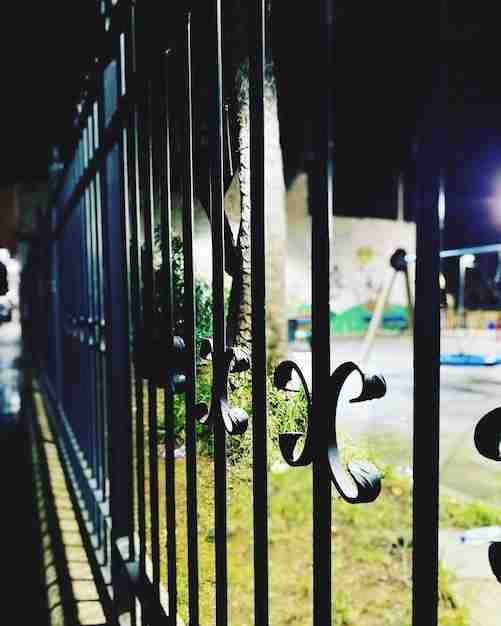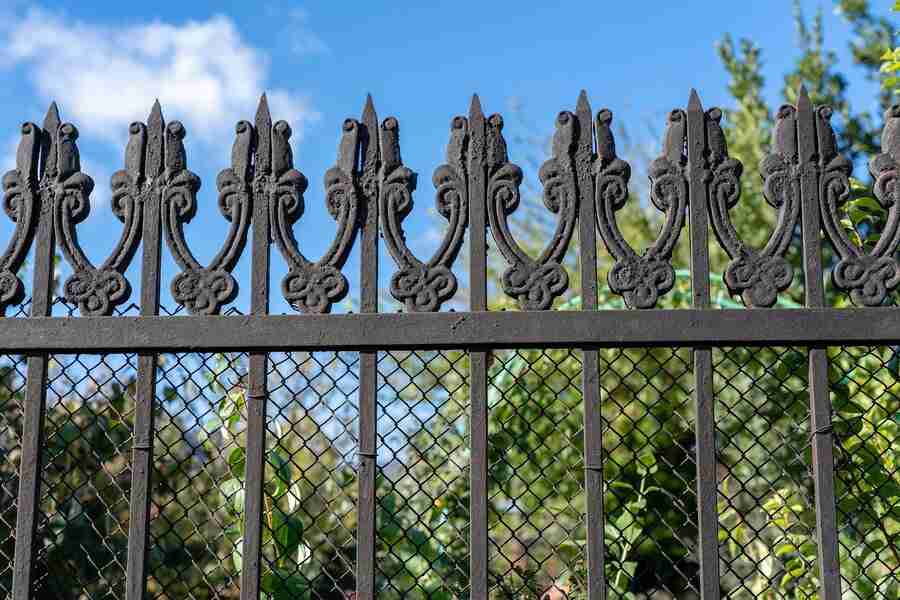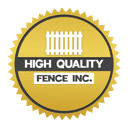Tips for Installing and Maintaining Your Iron Fence
Iron fences are not just functional barriers but timeless guardians of our homes, combining strength with aesthetic appeal. An iron fence can elevate your property’s security and curb appeal. To ensure the longevity and effectiveness of this sturdy addition, it’s crucial to comprehend the intricacies of installation and maintenance. This guide delves into indispensable tips for mastering the art of installing and preserving your iron fence. Whether enhancing security or adding a touch of sophistication, these insights will be your key to a resilient and attractive iron fence.
Planning Your Iron Fence Installation
Installing your iron fence requires meticulous planning, ensuring each step is strategically planned before commencing the project. Here’s a breakdown of essential considerations to ensure your iron fence installation is seamless and tailored to your needs:
- Assessing Your Property: Thoroughly Before installing a fence, measure the perimeter and identify uneven terrain or obstacles to ensure accurate measurements and precise installation.
- Defining Fence Height and Style: The height and style of your iron fence significantly impact its functionality and aesthetic appeal. Consider your specific security, privacy, and property appearance needs, and consider your home’s architectural style.
- Checking Local Regulations: Ensuring compliance with local regulations and obtaining permits is crucial for a smooth installation process, as it saves potential headaches and ensures a safe environment.
- Budgeting for Materials and Tools: A thorough budget for materials and tools is crucial for a cost-effective project, considering various styles and finishes of iron fences, including posts, panels, paint, coating, and installation tools, all at their respective price points.
Choosing the Right Iron Fence Materials
The choice of materials for your iron fence significantly impacts its durability and aesthetic appeal, and understanding the differences between options allows for informed choices. Here’s a closer look at key considerations when choosing suitable iron fence materials:
- Wrought Iron vs. Cast Iron: Wrought and cast iron are popular choices for iron fences, each with unique characteristics. Wrought iron is malleable and suitable for ornate designs, while cast iron is rigid and can be intricately molded. Wrought iron may be more prone to rust.
- Galvanized vs. Powder-Coated Finishes: Iron fence longevity relies on corrosion protection. Galvanized and powder-coated finishes offer excellent rust resistance and durability. Assess climate conditions and aesthetic preferences to choose the most suitable finish for your iron fence.
Understanding Durability and Maintenance Considerations
Ensuring the longevity of your iron fence involves a keen understanding of durability and maintenance considerations. Iron fences, whether wrought or cast, are susceptible to rust, making corrosion resistance paramount. Regular maintenance, such as rust removal and repainting, is essential for preserving their structural integrity and aesthetic appeal.
Climate and local conditions are pivotal in determining the frequency and extent of maintenance required. By comprehending these durability and maintenance nuances, you can make informed decisions during installation and establish a routine that safeguards your iron fence investment for years.

Tips for Selecting the Right Material
Selecting the suitable material for your iron fence is a crucial decision that significantly influences its overall performance, appearance, and longevity. To make an informed choice that aligns with your specific needs and preferences, consider the following tips:
- Assess Your Climate: Consider your region’s climate conditions when choosing corrosion-resistant materials. Galvanized iron, for instance, offers a protective layer to prevent rust, making it ideal for challenging weather conditions.
- Evaluate Maintenance Commitment: Maintaining a wrought iron fence requires regular rust removal and repainting. At the same time, cast iron with a powder-coated finish offers durability and design possibilities but requires less upkeep than a classic look.
- Consider Security Needs: Prioritize solid and resilient materials like wrought iron for security. The design of the fence, including spacing and height, also plays a crucial role in providing overall security.
- Explore Design Possibilities: Iron fences come in various styles and intricate designs, with wrought iron offering detailed patterns and cast iron allowing for unique shapes with a protective finish, allowing for aesthetic appeal.
- Seek Professional Advice: Consult iron fencing experts for insights on material performance, location, climate, and requirements. They can guide you in selecting the best material for your investment, ensuring a well-informed decision.
Tools and Equipment Needed
Installing an iron fence requires essential tools and safety gear to ensure a smooth and secure process. Here’s a breakdown of the tools and equipment needed for a successful installation:
Essential Tools for Installation:
- Measuring Tape and Level: Accurate measurements are paramount in achieving a well-aligned and structurally sound iron fence. A measuring tape ensures precision, while a level helps maintain straight lines and uniform height throughout the installation.
- Post Hole Digger or Auger: Digging sturdy and appropriately spaced holes for fence posts is critical. A post-hole digger or auger expedites this process, ensuring the posts are securely anchored in the ground for stability.
- Welding Equipment (If Applicable): The necessary welding equipment becomes indispensable if your iron fence design involves welding components together. This includes a welding machine, welding rods, and appropriate safety gear for welding.
Safety Gear and Precautions
- Protective Eyewear and Gloves: Prioritize safety during installation by wearing protective eyewear and sturdy gloves to protect eyes from debris and sparks, especially during welding, and hands from sharp edges and hot surfaces.
- Proper Clothing for the Installation Process: Wear protective clothing, such as long sleeves and pants, to protect your skin from scratches, cuts, and harsh weather conditions, reducing the risk of injuries.
Step-by-Step Installation Guide
Embarking on the installation of your iron fence involves a systematic approach to ensure a sturdy and visually appealing result. Here’s a step-by-step guide to guide you through the process:
- Preparing the Ground and Marking the Fence Line: Clear the area for fence installation, remove debris and vegetation, and mark the perimeter of the fence line using stakes and string for accurate placement and alignment during installation.
- Digging Post Holes and Setting the Posts: Dig holes for fence posts using a post hole digger or auger, ensuring they meet design specifications and local regulations. Place posts, level them, and secure them with concrete or gravel.
- Installing Horizontal and Vertical Rails: Attach rails to posts, creating the iron fence framework. Measure and mark spacing, and weld or secure according to design for level and aligned rails for a polished appearance.
- Securing Panels and Gates: Attach iron fence panels or gates securely to the framework using fasteners, ensuring they align with rails and ensure smooth opening and closing of the gate.
- Checking for Level and Making Adjustments: Ensure the alignment of fence components using a level throughout installation, making necessary adjustments to maintain straight lines and consistent height, and promptly addressing any issues to maintain fence integrity.
Maintenance Tips for Longevity
Maintaining your iron fence is crucial for ensuring its longevity, preserving its appearance, and protecting it from the elements. Here are some essential maintenance tips to keep your iron fence in top condition for years to come:
- Regular Cleaning and Inspection: Regularly inspect your iron fence for dirt, dust, and debris, and check for rust, loose components, or damage to prevent issues from escalating.
- Rust Removal and Prevention: Remove rust spots with a wire brush or sandpaper, then apply rust-inhibiting primer and weather-resistant paint to prevent future oxidation, ensuring the long-term durability of iron.
- Repainting and Resealing: Repaint your iron fence regularly with high-quality, weather-resistant paint to maintain its aesthetic appeal and protect it from weathering, ensuring a longer lifespan and a complementary color to your property.
- Addressing Minor Repairs Promptly: Regularly inspect your iron fence for loose bolts, screws, or minor issues, and address them promptly to prevent significant problems and maintain the fence’s stability and structural integrity.
- Lubricating Hinges and Latches: Regularly lubricate iron fence gates with silicone-based spray or oil to prevent friction-related wear and tear, ensure smooth operation, and extend the lifespan of moving parts.
Troubleshooting Common Issues
Troubleshooting common issues with your iron fence is essential to maintain its functionality and appearance. Address rust promptly using a wire brush or sandpaper, followed by a rust-inhibiting primer and weather-resistant paint. For loose or wobbly sections, tighten bolts and screws, ensuring structural stability.
Adjust gates to maintain proper alignment and functionality. Lubricate hinges and latches to prevent friction-related wear. If rust or damage is extensive, consult a professional for repairs. By promptly addressing these issues, you can ensure the longevity and effectiveness of your iron fence, maintaining its aesthetic appeal and structural integrity for years to come.

Enhancing Security with Iron Fences
Enhancing security with iron fences goes beyond their aesthetic appeal, providing a robust deterrent against unauthorized access. Opt for a fence height that discourages climbing, and consider adding spikes or finials for an extra layer of security. Strategically placed motion-activated lighting along the fence line can illuminate potential blind spots, enhancing visibility at night. Reinforce gates with sturdy locks and latches to prevent unauthorized entry.
Additionally, selecting durable materials and regularly maintaining the fence ensures it remains a formidable barrier. By incorporating these security features, your iron fence adds a touch of elegance and serves as a reliable safeguard for your property.
Conclusion
In conclusion, mastering the installation and maintenance of your iron fence is rewarding, offering security and curb appeal to your property. By following the tips provided, you ensure a durable and visually appealing fence that stands the test of time. We understand the importance of a well-crafted iron fence at High Quality Fence. If you need premium materials or professional assistance, our dedicated team is here to help.
Contact us at 209-815-9015 or email info@highqualityfence.com. Visit our website at https://highqualityfence.com/ to explore our range of high-quality iron fencing options. Secure your property with excellence – choose High Quality Fence for all your fencing needs.


